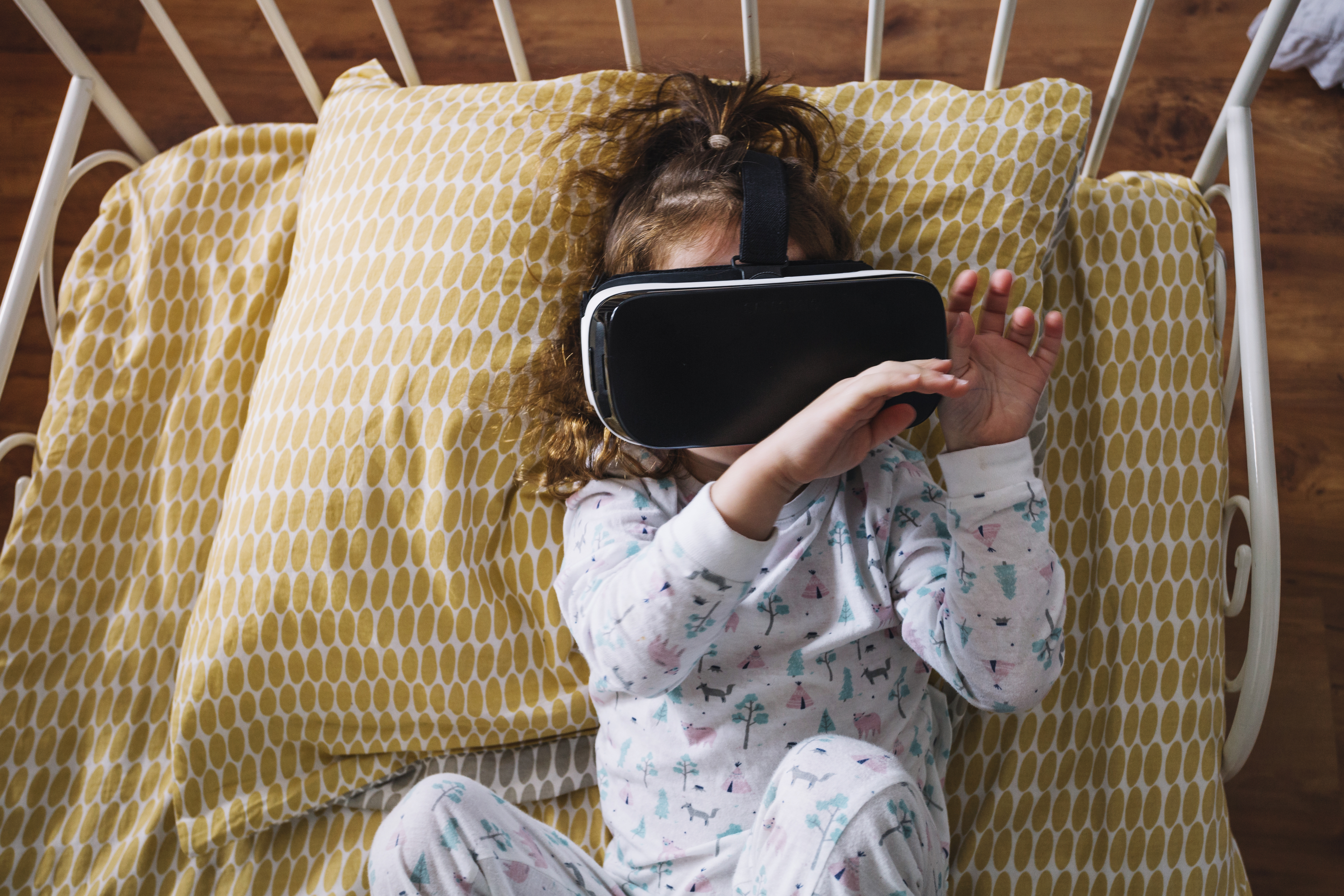Blog Posts
Welcome to the Little Ones Life Coach blog! Here, we’re dedicated to empowering parents with expert insights, practical tips, and thoughtful advice on parenting strategies, emotional regulation, and behaviour support for ADHD. Whether you’re looking for guidance to support your child’s academic success or tools to foster emotional well-being, our articles are designed to help you nurture a thriving relationship with your child. Stay tuned for inspiring stories, how-to guides, and expert interviews that will guide you every step of the way.

Mindful Screen Habits for Toddlers & Preschoolers
In today’s digital world, it’s almost impossible to avoid screens. From smartphones and tablets to TVs and computers, our little ones are growing up surrounded by technology. While screens can offer valuable learning opportunities, they can also interfere with playtime, sleep, and social development if not used mindfully.
That’s why establishing healthy screen habits early is so important. For toddlers and preschoolers, mindful screen use isn’t about strict restrictions—it’s about balance, guidance, and connection. Let’s explore how parents can nurture positive screen habits that support growth and well-being.
Why Screen Habits Matter in Early Childhood
The first five years of a child’s life are a time of rapid brain development. During this period, children learn best through direct human interaction—talking, playing, exploring, and imagining.
Excessive screen time can reduce opportunities for these essential experiences. Poor screen habits have been linked to shorter attention spans, sleep disturbances, and difficulties with emotional regulation. However, when used thoughtfully, screens can support creativity, learning, and family bonding.
The key lies in teaching children to use screens purposefully rather than passively.
Understanding Recommended Screen Time for Young Children
The UK’s National Health Service (NHS) and other child health organisations don’t prescribe a fixed number of screen hours but suggest that less is better—especially for toddlers under 2. For children aged 2 to 5, aim for no more than one hour of high-quality screen time per day, ideally with adult supervision.
These recommendations encourage families to prioritise real-world play, conversation, and physical activity—foundations of healthy screen habits that will last into adolescence and beyond.
1. Start with Mindful Modelling
Children learn by watching us. If parents constantly scroll or check notifications, children assume that’s normal behaviour.
Be conscious of your own screen habits—put your phone away during meals, playtime, or family conversations. Let your child see you reading books, engaging in hobbies, or spending time outdoors. By showing balance, you naturally teach them how to do the same.
2. Create Screen-Free Zones
Establishing specific areas where screens aren’t allowed can make a big difference. Keep devices out of bedrooms, dining areas, and playrooms.
This promotes better sleep and more meaningful interactions. It also sends a clear message: not every moment needs to involve a screen. Setting up these boundaries early helps children internalise mindful screen habits for life.
3. Co-View and Engage
When your child does have screen time, join them. Co-viewing allows you to discuss what they’re watching and connect it to the real world.
Ask questions like:
“What do you think will happen next?”
“Can you tell me what that character is feeling?”
This transforms screen time into a shared experience and reinforces language, empathy, and critical thinking—while strengthening your child’s screen habits through guided interaction.
4. Choose High-Quality Content
Not all screen content is created equal. Opt for educational and age-appropriate programmes or apps that promote creativity and problem-solving.
Look for trusted platforms such as CBeebies, Sesame Street, or Khan Academy Kids. Avoid fast-paced, overstimulating videos that encourage passive consumption.
High-quality media supports healthy screen habits by engaging your child’s curiosity rather than numbing their attention.
5. Balance Screens with Real-World Play
Screens should complement, not replace, hands-on play. Activities like building blocks, drawing, and pretend play help develop fine motor skills and imagination—things that no app can fully replicate.
Try to balance every hour of screen time with active, non-screen play. Encourage your child to explore nature, move their body, and use all their senses. This balance is at the heart of positive screen habits.

6. Keep a Consistent Routine
Children thrive on predictability. Set clear routines around screen use—perhaps watching one show after breakfast or using a learning app in the afternoon.
Consistency prevents power struggles and helps children understand limits. When they know what to expect, screens become just one part of their day, not the focus of it. Consistency builds stronger screen habits and reduces emotional meltdowns when screens are turned off.
7. Talk About Screens, Don’t Demonise Them
Completely banning screens can make them more tempting. Instead, talk openly about how screens can be both helpful and harmful.
Explain that screens are tools—great for learning and fun, but they shouldn’t take over other parts of life. This balanced perspective fosters understanding and helps your child develop self-regulated screen habits as they grow.
8. Encourage Creative Screen Use
Instead of only watching videos, guide your child toward creating things. They can draw on a tablet, make short videos, or listen to music while dancing.
Turning passive viewing into creative engagement supports imagination, problem-solving, and self-expression—core ingredients of mindful screen habits.
9. Set an Example During Family Time
Family mealtimes and outings are precious opportunities for connection. Make it a rule that everyone—adults included—puts away their devices.
Use this time to talk, laugh, and share stories. Showing that you value real-world connection over screens reinforces strong screen habits in your little ones.
10. Stay Flexible and Kind to Yourself
Parenting is full of challenges, and screen time can feel like a battleground. There will be days when your toddler watches a bit more TV than planned—and that’s okay.
The goal isn’t perfection; it’s awareness and balance. By practising compassion toward yourself, you model the same self-kindness you want your child to develop. Mindful screen habits grow from flexibility, not guilt.
Recognising When Screen Time Becomes Too Much
It’s normal for children to love screens—but it’s important to notice when screen use starts interfering with daily life.
Watch for signs such as:
Tantrums when the screen is turned off
Difficulty focusing on non-screen activities
Sleep problems or reduced interest in play
If these behaviours persist, it may be time to re-evaluate screen habits and gently reduce screen exposure while offering more engaging real-world alternatives.
Practical Tips for Managing Screen Time
Here are a few easy-to-implement ideas:
Use a visual timer so your child can see how long screen time lasts.
Involve your child in choosing when to use screens during the day.
Schedule “tech-free hours” before bedtime to improve sleep quality.
Celebrate non-screen activities with praise and enthusiasm.
These small changes make a big difference in developing sustainable screen habits.
The Role of Parents in Digital Literacy
Mindful screen use isn’t just about limits—it’s about education. Helping children understand the purpose of screens and the difference between active and passive use builds digital literacy from the start.
When children know why they’re using a screen (to learn, create, or connect), they’re more likely to form balanced screen habits that carry into later life.

Conclusion: Raising Tech-Savvy, Mindful Children
In a world where screens are everywhere, developing mindful screen habits is one of the best gifts you can give your child. It’s not about rigid rules—it’s about helping your toddler or preschooler use technology with awareness, curiosity, and balance.
By modelling healthy use, setting clear boundaries, and staying emotionally connected, you can raise children who are confident, compassionate, and in control of their digital lives.
FAQ
How much screen time is safe for a 3-year-old?
Experts recommend no more than one hour per day of high-quality, supervised screen time.
Can screens help my toddler learn?
Yes, when used thoughtfully. Educational apps and shows that encourage interaction can support early learning.
Should I worry if my child watches TV every day?
Daily screen use isn’t harmful if it’s balanced with plenty of play, rest, and family interaction.
How do I stop tantrums when it’s time to turn off the screen?
Use clear routines and warnings (“five more minutes”), and offer engaging alternatives like outdoor play.
Are video calls with family considered screen time?
No, video chats support real social connection and are a healthy form of screen use.
How can I make screen time more meaningful?
Co-view, discuss what you’re watching, and link screen content to real-life experiences.
Read also: “How to Share the Mental Load with Your Partner”


